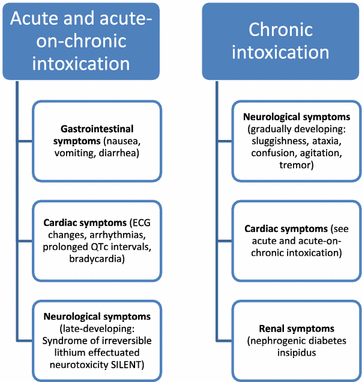


Symptoms of lithium toxicity can be mild, moderate, or severe. Lithium toxicity was first described in 1898.

In the United States about 5,000 cases are reported to poison control centers a year. Acute toxicity generally has better outcomes than chronic toxicity. For severe toxicity hemodialysis is recommended. Gastric lavage and whole bowel irrigation may be useful if done early. The diagnosis is generally based on symptoms and supported by a lithium level of greater than 1.2 mEq/L. Decreased excretion may occur as a result of dehydration such as from vomiting or diarrhea, a low sodium diet, or from kidney problems. Excessive intake may be either a suicide attempt or accidental. Lithium toxicity can occur due to excessive intake or decreased excretion. Complications may include serotonin syndrome. Some symptoms may last for a year after levels return to normal. Symptoms may include a tremor, increased reflexes, trouble walking, kidney problems, and an altered level of consciousness. Lithium toxicity, also known as lithium overdose, is the condition of having too much lithium. Gastric lavage, whole bowel irrigation, hemodialysis Tremor, increased reflexes, trouble walking, kidney problems, altered level of consciousness Įxcessive intake, decreased excretion ĭehydration, low sodium diet, kidney problems īased on symptoms and a lithium level


 0 kommentar(er)
0 kommentar(er)
